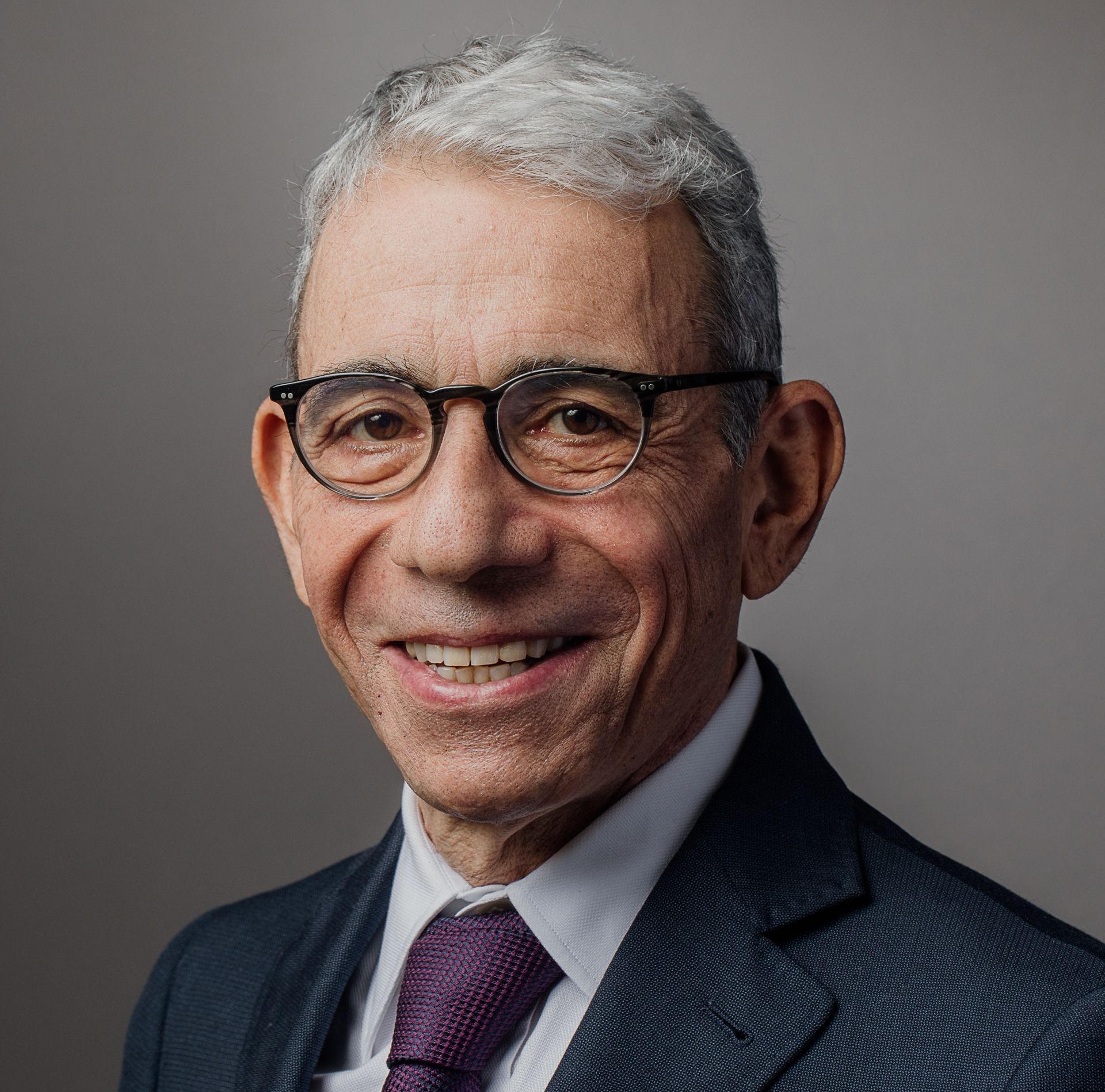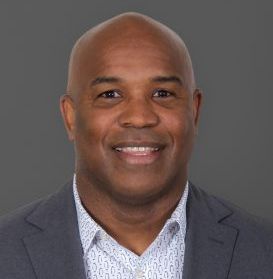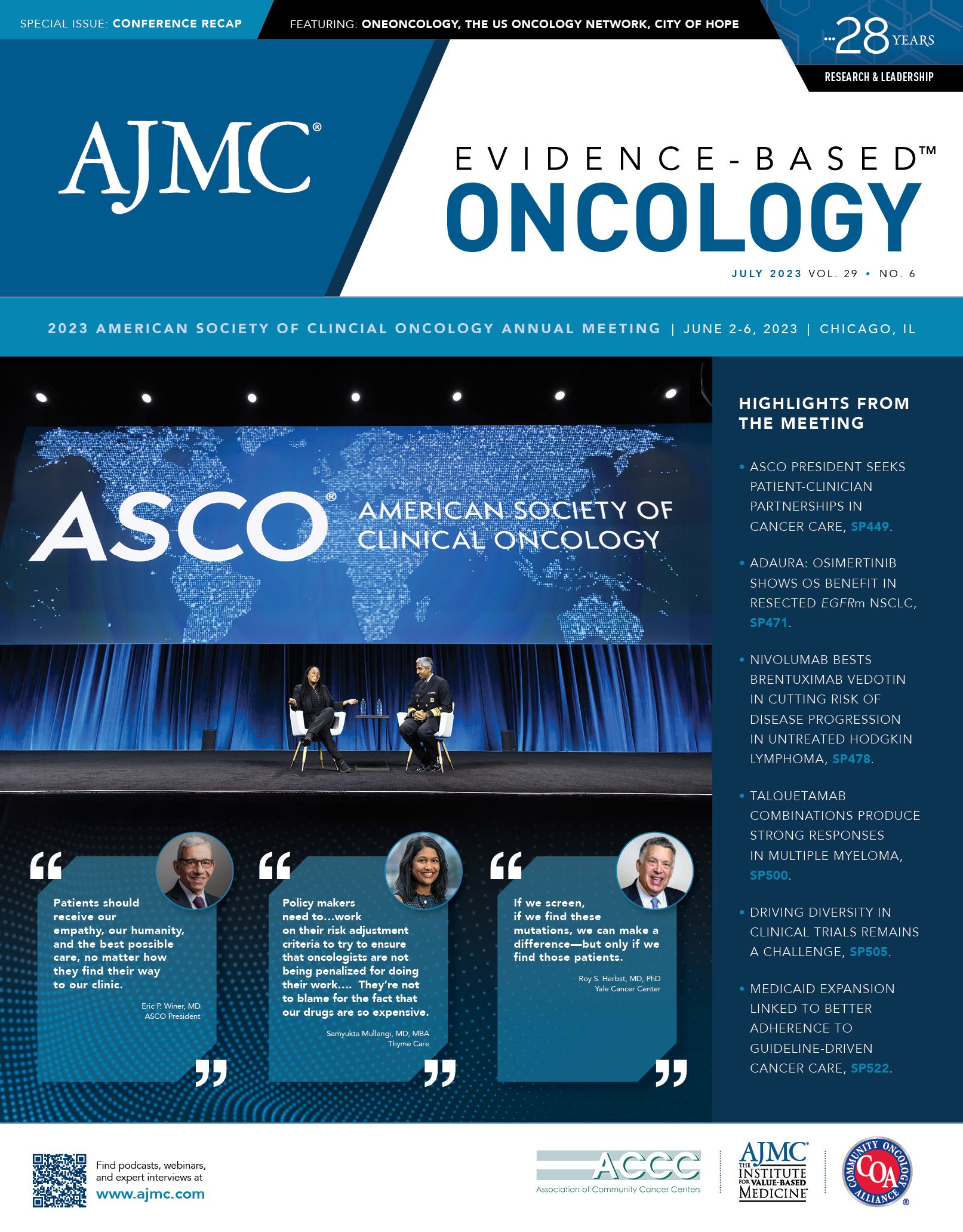- Center on Health Equity & Access
- Clinical
- Health Care Cost
- Health Care Delivery
- Insurance
- Policy
- Technology
- Value-Based Care
ASCO 2023: Health Equity
Coverage of sessions on disparities in access to clinical trials and cancer screening, as well as relationships each to outcomes. A joint session presented by ASCO and the European Society for Medical Oncology (ESMO) highlighted progress and lingering gaps in lung and colorectal screening.
More Work Is Needed to Bring Clinical Trials to Underserved Patients, ASCO Panel Says
Clinical trials are a crucial aspect of oncology drug development, and when study populations are substantially different from the real-world patient population that a drug is intended to treat, trial findings may not be generalizable to the clinical setting. But including diverse populations—especially those who are historically medically underserved—in clinical trials has thus far been easier said than done, as a panel discussion at the 2023 American Society of Clinical Oncology (ASCO) Annual Meeting highlighted.
The panel was composed of Ana Acuña-Villaorduña, MD, assistant professor of medical equalities at the Icahn School of Medicine at Mount Sinai in New York; Lola Fashoyin-Aje, MD, MPH, the associate director of science & policy to address disparities at the FDA’s Oncology Center of Excellence; and Steven Gore, MD, program scientist at the Experimental Therapeutics Clinical Trial Network and Cancer Therapy Evaluation Program at the National Cancer Institute (NCI).
Disparities Are Known, and Systemic Change Is Needed. Acuña-Villaorduña opened the presentation by painting a picture of the past and current clinical trial landscape. In the year 2009, she noted, only 8 drugs
Acuña-Villaorduña

were approved for cancer treatment, but the roster of FDA-approved cancer drugs had grown to more than 50 a year by 2020.1 And in the past 20 years, the response rates in early-phase clinical trials have more than doubled, she said.
“Unfortunately, there is a mismatch between the patients who participate in clinical trials and the patients who we see in our clinics, and 2 main [outcomes] are affected by disparities in clinical trials: generalizability of clinical trial results, and the efficiency of care delivery,” Acuña-Villaorduña said.
In early-phase trials, she explained, the impact of clinical trial disparities is even greater.
“We will be limiting the access to potentially efficacious investigational therapy to patients who do not have other treatment alternatives, and we will be also limiting ourselves in the understanding of drug pharmacodynamics and pharmacokinetics in the population that is excluded,” she noted.
Underrepresented groups in clinical trials include racial or ethnic groups, elderly patients, women, patients living in rural areas, those with comorbidities, and more. Although most research on disparities in clinical trials has focused on phase 3 trials, the gaps in trial participation may be even greater in early-phase clinical trials, Acuña-Villaorduña said. Race and ethnicity are also underreported in clinical trials, she noted.
Acuña-Villaorduña also described, by level, some of the barriers to trial participation. Study-level barriers, especially in early-phase trials, can include restrictive inclusion criteria and complex processes that entail multiple study visits. On the institutional level, barriers such as insufficient screening and trial matching, a lack of institutional self-assessments, prolonged activation times, and gaps in trial portfolios may keep patients from participating.
There are numerous patient-level barriers, such as unawareness of trial opportunities, distrust, financial limitations, geographic location, and other logistical factors. A lack of social support may also avert patients to committing to trials. And at the provider level, implicit bias, a lack of trial awareness, strained workforces, and the training of researchers may be limiting factors.
At the provider level, interventions to reduce innate bias are crucial, Acuña-Villaorduña said. One such intervention is the “Just Ask” training program for providers.2 For patients, education that is accessible and feasible is key.
For Regulators, Equity Is About More Than Morals. “When we discuss clinical trial diversity in the context of clinical trials or clinical studies of FDA-regulated medical products, we’re really discussing the broad range of characteristics of a study population that will enable us to be able to infer study outcomes to a broader population that will use those medical products,” Fashoyin-Aje said. “So, we are keenly interested in ensuring that the trial populations enrolled in these clinical trials and clinical studies are representative of the population with the disease or condition that they are intended to treat.”
While there have been positive trends in drug development in recent years, such as expedited timelines that bring drugs to patients quickly, there are also opportunities to improve evidence quality. “There may not be tension between these considerations if there is prospective planning to take these into account,” Fashoyin-Aje said.
Over time, for example, the FDA has seen lower proportions of US patients in pivotal trials, with most approvals based on international trials. Additionally, trials are typically conducted in large academic centers, which is often appropriate due to the resources they provide. However, this limits the reach of studies and can serve as a barrier to those who live far from large academic centers and do not have the means to travel.
The FDA has provided several guidance documents over the years to encourage diverse trial populations, including patients with comorbidities that are often excluded, such as brain metastases, HIV infection, or organ dysfunction, Fashoyin-Aje said.
She highlighted the Oncology Center of Excellence’s Project Equity public health initiative, which aims to improve clinical trial participation rates by focusing on historically underrepresented populations.
“The overarching focus here is to improve outreach, engagement, and collaboration of multiple stakeholders—including patients, community, patient advocacy groups, and societies, like ASCO and the American Association of Cancer Research—to ensure that the initiatives that are underway across these multiple stakeholders incorporate the regulatory perspective in the solutions that are being recommended, but also so that we at the Oncology Center of Excellence have an opportunity to learn about broader issues to consider that may impact the kinds of data that we and the FDA are receiving” Fashoyin-Aje said. Fashoyin-Aje also highlighted an FDA guidance on diversity planning to ensure enrollment of participants from underrepresented racial and ethnic populations in trials.3 Since the Consolidated Appropriations Act of 2023 was signed into law, sponsors are required to submit diversity action plans to the FDA based on that guidance when conducting phase 3 or other pivotal trials.
“The FDA has provided a regulatory framework for prospective planning to ensure clinical trial participant diversity, and also, many sponsors have themselves adopted similar frameworks within their respective institutions,” she said. “But I want to emphasize that these are very complex issues. Health care inequities are sort of present and this trickles down to clinical research as well.”
Only system-wide improvement will drive sustainable change, she said, and consistent work is needed to stay on track.
Strategies to Overcome Barriers to Equity and Access. Gore provided an overview of an NCI Experimental Therapeutics Clinical Trial Network (ETCTN) initiative called Create Access to Targeted Cancer Therapy for Underserved Populations (CATCH-UP.2020).4
CATCH-UP.2020 was a congressionally mandated supplement to NCI Cancer Center Support Grants in 2020 and aimed to provide targeted therapies to underserved communities. NCI Cancer Centers that were not part of the ETCTN were eligible to apply, then had to demonstrate their ability to recruit patients from underserved communities by accruing at least 24 patients to their site in 1 year, 50% of whom had to be part of underserved populations, Gore explained.
Fostering access to trials for underserved populations was a chief goal of the program, which also aimed to facilitate the sharing of best practices, coordination strategies, telemedicine, and other technological integration strategies, as well as set new standards for clinic outreach.
The program did well, increasing the proportion of historically underserved patients from about 13% to 23% from October 2020 to August 2022, although the majority population was White by far.
“In part, remember, we were looking for rural participation and we were looking for medically underserved urban populations, which includes White people—so, there’s nothing wrong with that. But our ability to really enrich for people of color and other traditional ethnic minorities, I think we came up short still. We have a long way to go,” Gore said.
Effective best practices included the use of patient navigators, immersion into the community, and telemedicine use—including for patient consent, which Gore noted was a major step at the University of Kansas, where telemedicine was used to facilitate care across the entire state with as few visits to Kansas City as possible for patients. They also utilized community doctors to administer treatments.
Screening of genomic data to identify underserved patients with genomic mutations was a less fruitful strategy, Gore noted. Investigators also held monthly meetings to discuss the good and bad, fostering a community that proved beneficial. Engaged cancer center community outreach offices were also key aspects of success.
The conclusion of an accompanying report to the presentation, authored by presenters and colleagues, reiterates a takeaway that echoed all during the session.5
“While many efforts may be bottom-up, locally developed and funded, public-private partnerships to incentivize and enable the necessary changes in culture and practice will be needed for larger impact on our national cancer research infrastructure,” they wrote. “An inclusive, diverse clinical trial patient population will lead to cancer treatments that will be feasible across communities.”
References
1. Oncology (cancer) / hematology malignancies approval notifications. FDA. Updated May 31, 2023. Accessed June 12, 2023. https://www.fda.gov/drugs/resources-information-approved-drugs/oncology-cancer-hematologic-malignancies-approval-notifications
2. Just Ask! increasing diversity in cancer clinical research.
Association of Community Cancer Centers. Accessed June 12, 2023. https://bit.ly/3NnW8YG
3. Diversity plans to improve enrollment of participants from underrepresented racial and ethnic populations in clinical trials; draft guidance for industry; availability. Docket number: FDA-2021-D-0789. FDA. Updated April 13, 2022. Accessed June 12, 2023. https://bit.ly/43XojD0
4. Create Access to Targeted Cancer Therapy for Underserved Populations (CATCH-UP.2020). National Cancer Institute / Cancer Therapy Evaluation Program. Accessed June 12, 2023. https://ctep.cancer.gov/initiativesPrograms/etctn_catch-up2020.htm
5. Acuña-Villaorduña A, Baranda JC, Boehmer J, Fashoyin-Aje L, Gore SD. Equitable access to clinical trials: how do we achieve it? Am Soc Clin Oncol Educ Book. 2023;43:e389838. doi:10.1200/EDBK_389838
SPOTLIGHT: Disparities in Germline Genetic Testing Rates Exist, but Mechanisms Remain Unclear
Barb Kunz, MS, LCGC, senior genetic counselor at The US Oncology Network, spoke with Evidence-Based Oncology (EBO) about a study she
Kunz

presented at the 2023 American Society of Clinical Oncology Annual Meeting in Chicago, Illinois, that examined the importance of germline genetic testing in patients with triple-negative breast cancer (TNBC) and other cancer types. Kunz and her coauthors found that social determinants of health, particularly those related to race and the patient’s type of insurance coverage, affected genetic testing rates in the community oncology setting.
EBO: What are the implications of these findings for patients with TNBC and other cancer types where germline testing is recommended?
Kunz: The biggest implication is trying to understand why these differences exist, how can we address them, and where along the genetic testing workflow these [patients] weren’t getting what they needed. Were they not identified in the first place for genetic testing? Were they not referred? Were they referred and didn’t have an appointment? If they had an appointment, why did they choose not to do testing?
And it’s not that everyone should do testing; [patients] have options and reasons why they don’t do testing. But we need to understand why there’s that discrepancy and address it. And it will apply to other cancers. Can we do systemic things [such as] change workflows to make sure that [individuals] don’t overlook these indications for genetic testing? The indications for genetic testing are going to keep increasing, and we need our providers [to] understand that, and our patients [need to] understand the value of genetic testing.
Reference
Reid RL, Dye J, Leong T, et al. The impact of social determinants of health (SDOH) on use of germline genetic testing for triple-negative breast cancer (TNBC) in the community oncology setting. J Clin Oncol. 2023;41(suppl 16):1094. doi:10.1200/JCO.2023.41.16_suppl.1094
ASCO-ESMO Panel Highlights Progress and Disparities in Lung and Colorectal Cancer Screening
While there has been significant progress in lung and colorectal cancer screening technology, disparities in screening uptake and access to care continue to impact outcomes among different populations, according to presenters in a session at the 2023 American Society of Clinical Oncology (ASCO) Annual Meeting.
The session, a joint endeavor between ASCO and the European Society for Medical Oncology (ESMO) was chaired by current ASCO president Eric P. Winer, MD, director of Yale Cancer Center; current ESMO president Andres Cervantes, MD, PhD, professor of medicine, the University of Valencia; and ASCO scientific program chair Kimmie Ng, MD, MPH, of Dana-Farber Cancer Institute.
Winer

Cervantes

“We decided to focus on 2 of the leading causes of cancer mortality for which there is evidence to support screening, and also because there are different recommendations for screening for these cancers in different countries around the world,” Winer said.
Presenters included Folasade May, MD, PhD, MPhil, director of the May Laboratory at the University of California, Los Angeles; Christophe Von Garnier, MD, professor, Centre Hospitalier Universitaire Vaudois; Cary Philip Gross, MD, professor of medicine and public health at the Yale School of Medicine; and Charles Swanton, MD, PhD, FRCP, a clinician scientist the Francis Crick Institute.
Screening and Barriers in Colorectal Cancer. May kicked off the session with an overview of the evidence supporting colorectal cancer screening, the 2021 United States Preventive Services Task Force (USPSTF) colorectal cancer screening guidelines, screening utilization in the United States, and barriers to screening. Colorectal cancers, she noted, are the third most common cause of cancer and the second most common cause of cancer-related deaths in the United States—but 1 in 3 adults do not undergo screening.
Randomized trials and observational data support the efficacy of a variety of screening methods, May noted. Additionally, the rate of early-onset colorectal cancer has risen in recent years, with patients aged 20 to 49 years showing a 51% increase in colorectal cancer incidence, while rates have declined in those 50 years and older. This finding was a catalyst for new USPSTF screening guidelines in 2021, which recommend screening for those aged 45 to 49 years in addition to those aged 50 to 75 years.1
A range of screening modalities can be employed, including stool-based tests such as fecal immunochemical assessments and direct visualization techniques such as virtual colonography or colonoscopy. But any noncolonoscopic methods require colonoscopy as a second step to complete screening—a step only about half of patients take, May said. Other noninvasive strategies include new stool-based tests, blood-based multicancer early detection (MCED) tests, wireless capsule endoscopy, and urine-based screening.
A major challenge is that historical gaps in screening rates tied to social determinants of health such as race, ethnicity, education, or socioeconomic status have not fully closed, May noted, adding that implementation science often focuses on disadvantaged groups.
“In addition to patient-level factors like lack of knowledge, cultural differences, health literacy, language, distrust in the health care system, there are also invertible provider-level, system-level, and policy-level factors,” May said. “So, we do need to focus on increasing awareness among providers…. As of now, there are data that demonstrate there are some biases in who we recommend screening to.”
In mitigating disparities, Gross noted that centering marginalized communities in screening implementation research and guidance, employing learning health systems, taking a public health perspective on screening, and community engagement are all strategies that may improve screening implementation and outcomes, according to Gross.
“As far as the overarching strategies, it’s really important that we invest in research that will help us to identify the best strategies to mitigate disparities. We need to allocate resources in a very different way, both within our health system and outside our health care system, because people have competing demands [and] competing risks that can also impede their ability to undertake cancer screening,” Gross said.
Cancer screening must also be part of a comprehensive approach to mitigate disparities, not examined in a vacuum, he said. Gross also emphasized the importance of community-based participatory research to increase the reach of screening and give communities a voice in the best approach to screening implementation.
Lung Cancer Screening Evidence and Disparities. Garnier discussed guidelines and emerging evidence for lung cancer screening, as well as the challenge of reaching underserved patients. He opened with an overview of the screening process, which currently includes low-dose chest CT screening.
Evidence is still emerging in the lung cancer screening space, he noted, with the majority of data coming from 2 large trials: the National Lung Screening Trial in the United States2 and the NELSON trial in the Netherlands and Belgium.3 Several smaller trials also contribute to the evidence for lung cancer–related mortality reduction with lung cancer screening.
Reaching at-risk populations can also be a challenge, and various approaches have been taken to reduce the barriers to screening. Garnier highlighted an initiative in the United Kingdom, the Manchester Lung Health Check, that brings screening to areas with high disease prevalence by screening patients in mobile units and has facilitated substantially higher uptake and adherence compared with individuals in the United States.
In Switzerland, an implementation group of various stakeholders emphasized the importance of positive framing as a lung health check, a broad-based invitation of risk population, primary care provider involvement, and centers or mobile units serving as 1-stop clinics. High-risk patients are often fearful, socioeconomically deprived, culturally or geographically isolated, and less likely to adhere to health care, Garnier noted.
“An important lesson from the Manchester trial is that there shouldn’t be initial mention of lung cancer or smoking cessation, that there should be broad information in all potential contact areas—pharmacies, [general practitioners], hospitals, shopping areas, and public toilets,” Garnier said. “Also, social media should be used as much as possible, and family and friends involved in a process of screening. Videos of processes can be important to decrease anxiety, and employing celebrities to try and get the message across about lung cancer screening is important.”
Novel Screening Approaches in Lung and Colorectal Cancers. Swanton spoke to principles behind the latest screening technologies and considerations for the future of lung and colorectal cancer screening.
He first discussed the challenges of detecting circulating tumor DNA (ctDNA), which he likened to a needle in a haystack in the context of early-stage lung cancer detection because so little ctDNA is present in early cancers. Lowering the limits of ctDNA detection will be an important area of research, he said.
Multiple studies have shown that ctDNA is associated with aggressive tumor biology and poor clinical outcomes, Swanton noted, adding that tumors not shedding ctDNA or shedding only small amounts of ctDNA are associated with better outcomes.
Swanton raised the issue of the potential for overdiagnosis, which is often raised in the context of ctDNA testing for early-stage cancers. However, he does not consider this to be a significant risk. “The reason for that is that cDNA allelic fractions are essentially independently prognostic of tumor stage. The more you release, the worse the outcome, and ctDNA itself is a poor prognostic indicator.”
In colorectal cancer, another challenge is that an estimated two-thirds of the benefit of colonoscopy can be attributed to the detection of adenomas, which are rarely ctDNA positive, Swanton said. Across cancer types, the use of ctDNA testing would ideally complement screening methods already known to be effective, he added.
There is still a case for MCEDs, which ideally would detect multiple cancers without sacrificing sensitivity and specificity. This could help mitigate the issue of poor screening uptake for individual cancers, which Swanton noted only compounds with the number of screenings a patient is eligible for. MCEDs optimized for specificity also have potential to reduce cumulative false positive rates compared with multiple single-cancer screenings.
“New technologies require extensive, population-based prospective studies to validate them, accounting for ethnic diversity and low socioeconomic and at-risk groups,” Swanton said.
References
1. Davidson KW, Barry MJ, Mangione CM, et al; US Preventive Services Task Force. Screening for colorectal cancer; US Preventive Services Task Force recommendation statement. JAMA. 2021;325(19):1965-1977. doi:10.1001/jama.2021.6238
2. Aberle DR, Adams AM, Berg CD, et al; National Lung Screening Trial Research Team. Reduced lung-cancer mortality with low-dose computed tomographic screening. N Engl J Med. 2011;365(5):395-409. doi:10.1056/NEJMoa1102873
3. de Koning HJ, van der Aalst CM, de Jong PA, et al. Reduced lung-cancer mortality with volume CT screening in a randomized trial. N Engl J Med. 2020;382(6):503-513. doi:10.1056/NEJMoa1911793
Inequalities Within and Between Practices Contribute to NGS Testing Disparities in NSCLC
Inequities both within and between practices contributed to overall racial and ethnic inequities in the timely use of next-generation sequencing (NGS) testing for advanced non–small cell lung cancer (NSCLC), according to a study of patients with the cancer treated in the community setting in the United States.1
Vidal

“While biomarker testing in routine clinical practice has increased over time, rates of timely NGS testing continue to lag behind recommendations. As a result, patients who are eligible for targeted therapy may receive potentially less effective or more toxic therapies when targeted oncogenic drivers are not identified due to delays or missed biomarker testing,” said Gregory A. Vidal, MD, PhD, medical oncologist at West Cancer Center and Research Institute, while presenting the findings at the 2023 American Society of Clinical Oncology Annual Meeting.
Vidal added that Black patients with nonsquamous advanced NSCLC are less likely to undergo NGS testing than White patients, which could have survival implications.
A growing body of evidence highlights the overall inequities in the use of NGS testing among eligible patients across cancer types,2 and this study explored individual elements that may contribute to the known racial and ethnic disparities in advanced NSCLC. The findings suggest that practice- and provider-level inequities are substantial contributors to overall disparities in NGS use.1
Using data from the Flatiron Health database, which encompasses deidentified electronic health records from a nationwide population, the researchers examined timely testing rates among patients with advanced NSCLC whose cancer was diagnosed in April 2018 or later and treated in the community oncology setting. Quality testing was defined as an NGS result reported by 60 days after advanced diagnosis.
Regardless of race or ethnicity, the overall rate of timely biomarker testing among 12,045 patients was 51%, which the authors noted is lower than a previously reported rate of 80%. Of the overall study group, 9981 patients were non-Latinx White, 1528 were non-Latinx Black, and 536 patients were Latinx.
Overall inequity was measured as the average percentage point difference between rates of timely testing among non-Latinx Black or Latinx patients compared with White patients. Within practices, inequity was the average percentage point difference in testing rates weighted by how often various demographics are seen in the practice. Between practices, inequity was the relationship between overall testing rates and the practice-level racial or ethnic underrepresentation.
At the practice level, the overall mean percentage point difference estimate was 7.49 between non-Latinx Black vs White patients and 8.26 in Latinx vs non-Latinx White patients. Within practices, the estimates were 3.56 and 4.97, respectively. And across practices, the percentage point differences were 3.92 and 3.29.
Based on these estimates, 52% of the total inequity among non-Latinx Black vs White patients and 40% of the inequity seen in Latinx vs White patients were contributed by across-practice inequity, Vidal explained. The remaining 48% and 60% of the total inequity, respectively, could be attributed to within-practice inequity in the study population.
“[This] means that we see meaningful contributors to the practice-level inequity for both practices who are testing their Black or Latinx patients at different rates compared with the non-Latinx White patients—the within-practice inequity—and practices who see more Black or Latinx patients being low testers in general—the across-practice inequity,” Vidal said.
Inequities were also seen at the provider level, with across-provider differences in testing being the dominant contributors in disparities in both non-Latinx Black and Latinx patients vs White patients. Across-provider inequities in testing rates contributed to 77% and 67% of mean total inequities, respectively.
“At the provider level—that is, at the level of the primary treating oncologist—we observed that individual providers do not appear to treat their patients differently based on race or ethnicity, but that minorities tend to get their care from providers who generally are low testers,” Vidal said.
In a subgroup analysis focusing on patients with only nonsquamous histology, which has more actionable oncogenic mutations, the researchers saw trends consistent with those in the overall group. Vidal noted that the low overall rate of testing seen in the study population and the disparities between racial and ethnic groups are causes for concern.
“These findings have implications as we move from characterizing inequities to designing, implementing, and evaluating interventions and policies aimed at improving equitable and timely NGS testing as a quality care metric in advanced non–small cell lung cancer,” Vidal concluded.
References
1. Vidal GA, Jain N, Fisher A, et al. Practice- and provider-level inequities in next-generation sequencing (NGS) testing by race/ethnicity for patients (pts) with advanced non-small cell lung cancer (aNSCLC) treated in the community setting. J Clin Oncol. 2023;41(suppl 16):6508. doi:10.1200/JCO.2023.41.16_suppl.6508
2. Dutta R, Vallurupalli M, McVeigh Q, Huang FW, Rebbeck TR. Understanding inequities in precision oncology diagnostics. Nat Cancer. 2023;10.1038/s43018-023-00568-1. doi:10.1038/s43018-023-00568-1
SPOTLIGHT: Improving Access to Treatment Remains a Challenge in AML, Says Jeffrey Lancet, MD
Much work is needed to address inequities and gaps in care access for patients with acute myeloid leukemia (AML), said Jeffrey Lancet, MD, chair of the Department of Malignant Hematology at Moffitt Cancer Center, who spoke with Evidence-Based Oncology (EBO).
EBO: Where are there opportunities to address disparities and improve health equity in the treatment of AML and other hematologic cancers?
Lancet: I think being able to focus efforts and research on treating underserved patients with these very difficult and challenging diseases is going to be critical to the success of our overall mission to improve outcomes in leukemia patients.
Certainly, we need to do a better job at offering clinical trials to underserved patients who often are underrepresented—or I should say close to always underrepresented—in most large clinical trials. And that deprives those patients of the opportunity to receive potential cutting-edge therapy before it’s officially approved, but also denies us, the medical academic community, the opportunity to understand how these new drugs work and all types of patients, because there may be differences and how effective therapies might be from one population of patients to another. So creating equity through both availability of therapy and availability of clinical trials, to me, is really critical to advancing the field. And I think we have a long way to go on to achieve that. But certainly, efforts towards making these new drugs available to patients in underserved communities is going to be very important.
And to that effect, being able to lower the cost of care is certainly going to be very important, as well, because [the] more out-of-pocket expense associated with these drugs, the less likely it is that underserved, or disadvantaged, or poor patients will be able to access these drugs. So there’s a lot of a lot of moving parts here, but I am concerned about potential inequity in care when it comes to treating very serious, aggressive diseases with complicated therapies that are much more difficult to administer in the community setting or that require a lot of patient expense.
So, these are major concerns that we have to deal with as a health care community for sure—not just for AML, but for all cancers.

